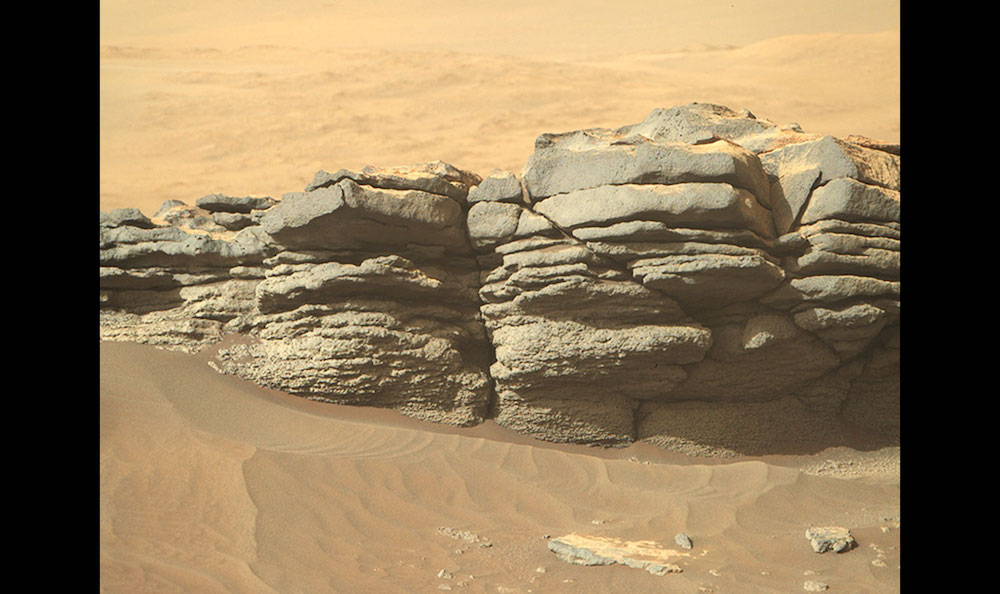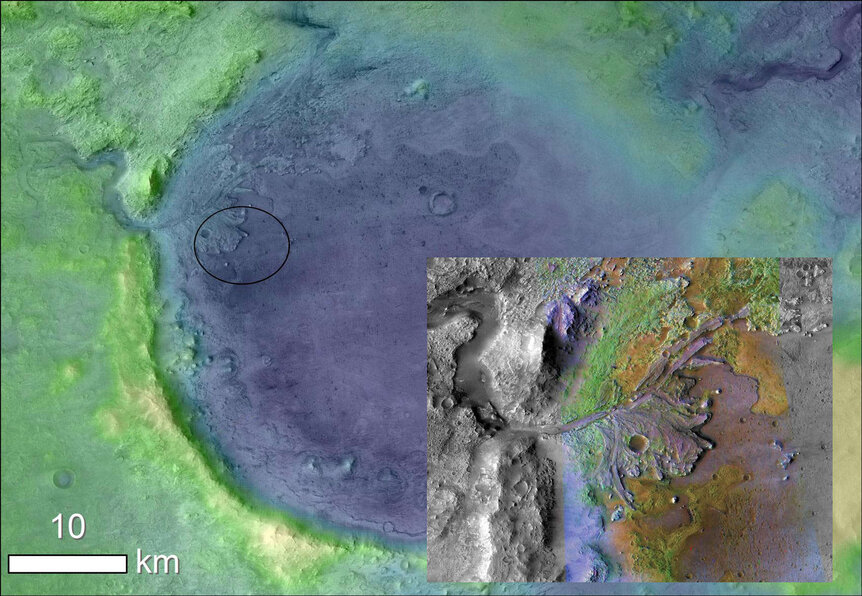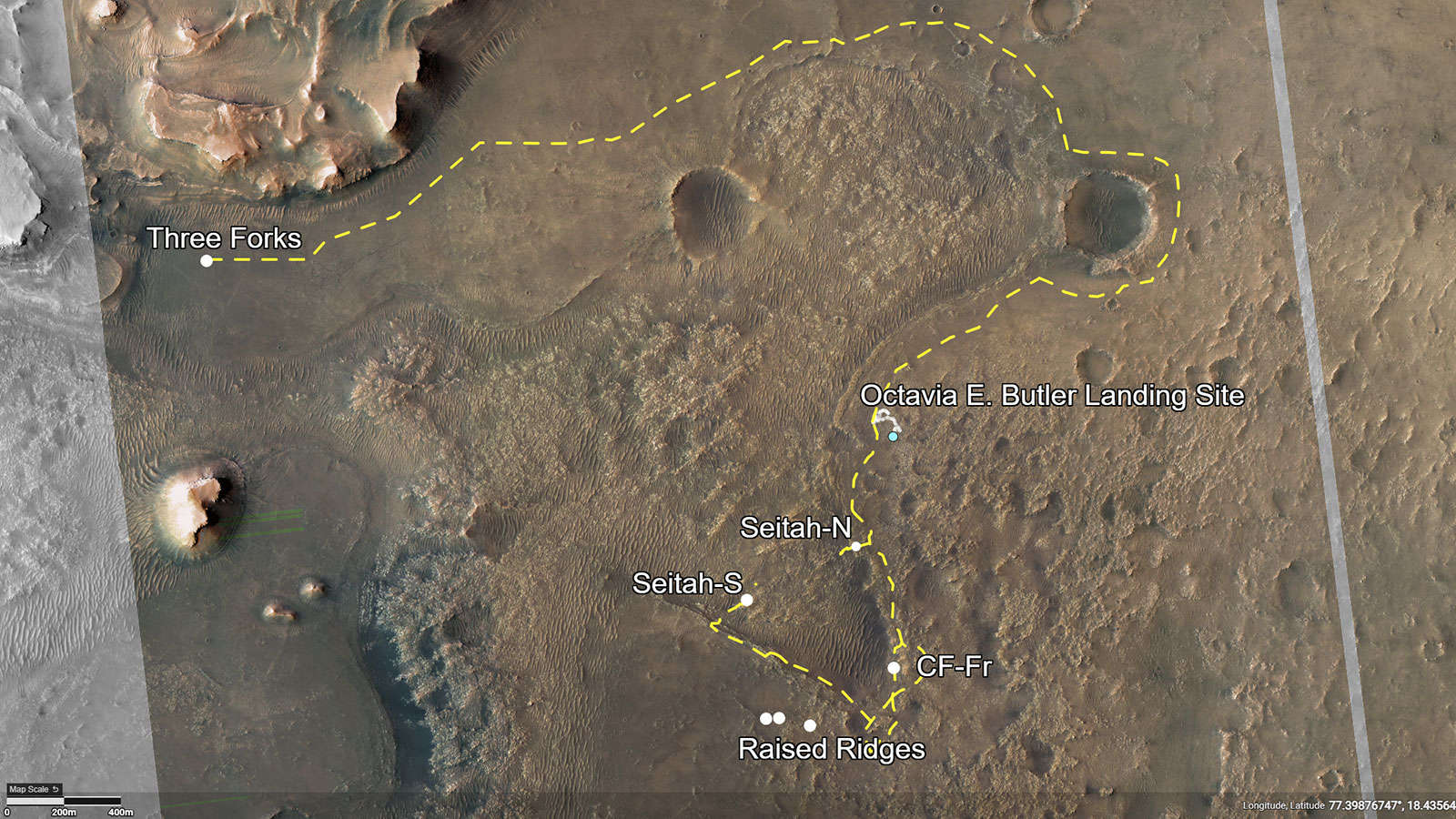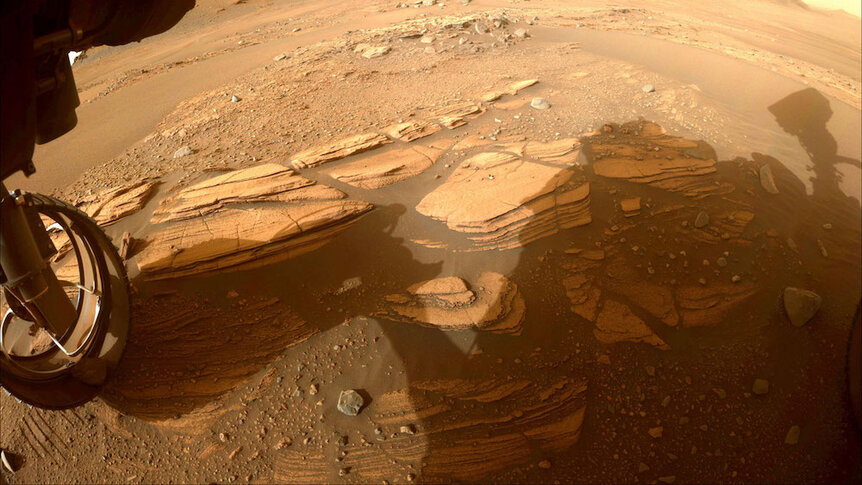Create a free profile to get unlimited access to exclusive videos, sweepstakes, and more!
Perseverance rover reveals Martian lakebed is surprisingly volcanic
Igneous rocks provide a timeline to a crater lake.

Since it landed on Mars in February 2021, the rover Perseverance has been exploring Jezero Crater, a 50-kilometer-wide impact feature. The mission’s purpose is to look for evidence that Mars once had or maybe still has areas that can support life.
Jezero was chosen as the landing site because it was very clearly a lake of standing water at some point in the past. Orbiters detected minerals that form in water there, and in the northwest part of the crater are the remains of an enormous fluvial delta formation, sediment deposited as water flowed into the crater eons ago — think Nile delta and you’ve got it.
You might expect, then, that the floor of the crater would be loaded with sedimentary rocks; minerals deposited as silt and grains of other material settled down to the lake bed, were compressed, and formed layered rock. But geology is sneaky, even — or especially — on Mars, and can trick you. Not everything happens in chronological order
One of the first spots the rover visited was a patch of rock called the Séítah unit — which means “amidst the sand” in the Navajo language, which is fitting — known to have some of the oldest rocks in the crater, including bedrock and sedimentary layers nearby.
Four research papers have been published in the journals Science and Science Advances with details of what Perseverance found there [links to Paper 1, Paper 2, Paper 3, and Paper 4]. They deal in general with the question: What are the rocks on and below the surface telling us about the geology of the area and the timeline of water in Jezero Lake?
Perseverance has many scientific instruments onboard to examine Mars with, and they each tell a story about the rocks that can be used to create a coherent picture. What they found is the area is rich in olivine and other minerals formed in magma, meaning they were looking at igneous, not sedimentary, rocks, and that, despite being under a lake, these rocks had not been heavily changed by interactions with water.
Using the Planetary Instrument for X-ray Lithochemistry (or PIXL), scientists examined some rock outcrops in Séítah and found them to be igneous in origin. They saw olivine crystals in them and found them to be roughly 1 – 3 mm in size. Olivine is a relatively simple mineral that forms in magma as it cools, and the size of the grain depends on how long it takes to cool. If the magma flows out onto the surface and cools rapidly then crystals don’t get time to form, and the grains are small. Ones the size found by PIXL indicate the magma cooled slowly, so it was likely still under the surface when it hardened.
They also do find some evidence of interaction with water in the rocks, but it’s not extensive. This jibes with one of the other papers that found rocks in Séítah that have carbonates in them, minerals consistent with the rocks being exposed to carbonated water, but again under water-poor conditions. Cracks in the rocks were filled with minerals that were likely deposited by very salty water later on.
From orbit it was hard to tell what formed these rocks: lakebed sediments, ash from volcanic eruptions, magma oozing up from below, or stuff blown in on the Martian wind that later turned into rock. All that was known is that the crater formed between 3.82 and 3.96 billion years ago.
But with Perseverance on the spot, a clearer picture is emerging. The bedrock is igneous, formed from magma early on in the history of Mars. An asteroid impact excavated the huge crater, exposing much of the bedrock, and possibly more magma erupted out after.
Then, the water. Certainly much of it flowed in from the northwest, forming the delta, and there are overflow features to the southeast as well. These indicate standing water, though for how long is still unclear. Over the seasons — centuries? Millennia? More? — sediments built up at the lake bottom, covering the bedrock.
But then, disaster. Something changed on or more likely inside Mars. One idea is that the small iron core cooled enough to solidify. When that happened the Martian magnetic field switched off, and up until then it had protected the planet from the onslaught of subatomic particles in the solar wind. The wind then stripped away much of the planet’s atmosphere, and surface water boiled away in the low pressure or seeped down into the surface (though it’s not clear how much of it found its way downward).
Jezero Lake became just Jezero Crater once again as the water dried up. This was billions of years ago and the wind, though weak, was implacable. Over the eons erosion stripped away a lot of the softer sedimentary rock, leaving behind the tougher igneous ones. Some of these would have been only just below the sedimentary layers, so they had some interaction with water, but not much, explaining the minerals Perseverance found there.
This is both good and bad for scientists. Igneous rocks are great for getting things like timelines of geologic events, because the crystals keep a record of when they formed via things like radioactive decay. However, they wouldn’t contain any real information about life that might have existed in the lake; they formed too early.
On the other hand not all is lost. In April, Perseverance reached the base of the huge sediment delta. The rocks it finds there will be tougher to find an age for, but could retain evidence of life if it existed in the ex-lake.
The rover could find that evidence itself, but it’s also collecting rock samples and storing them for an ambitious mission to send them to Earth for study here. The plan is to send an orbiter and lander in 2027 and 2028; the lander will collect the samples, launch them up to the orbiter, which will then return to Earth with them in 2033. It’s a complex and difficult endeavor, but the payoff could be the biggest in history: Evidence of life on another world.
Or it may show that Mars never did have life in the lake. Either way, that will be very, very important to know. And we’re right on the edge of finding out.































